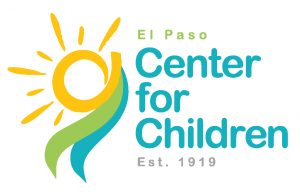Youth & Young Adult Runaway Prevention
Written by Mel Gutierrez, BSN, RN
Every year in the United States, 4.2 million 13 to 25 years old experience homelessness. This means that in a group of 10 people between 18-25 years old, one will experience homelessness in a year. If there is a group of 30 people between 13-17 years old, one will experience homelessness in a year. (1) In these two groups, many more risk losing a safe environment to call home. Older adults tend to stay in shelters or on the streets. This makes it easier to know how many struggle with homelessness. Younger homeless individuals often stay short-term with friends and family members. This couch surfing makes it impossible to get 100% accurate data. (3)
The stereotype is that teens and young adults who struggle with homelessness are bad kids or troublemakers. (1) However, the reality is more complicated. These young people are often dealing with situations that feel overwhelming. This can be stressful family dynamics, bullying or abuse, or neglect. (1) By understanding what puts a teen or young adult at risk, the long-term impacts of youth homelessness, and what resources are available, we can help ensure that all youth are safe and are given a chance to thrive.
QUICK RESOURCES FOR HELP
- Emergency Shelter (ages 11-17): 915.562.4765
- Drop-In Center (ages 11-24)
- 24-hour helpline for youth and young adults in crises: 915.330.9513.
- Safe Place designated locations for crisis help (ages 11-24)
- Victims of Crime Counseling Services aids anybody in our city who has experienced, witnessed, or been indirectly impacted by a crime if they live in El Paso County.
Who is at Risk?
- 29% of homeless youth report having substance abuse problems
- 69% stated they struggled with their mental health
- Nearly half had been in juvenile detention, jail, or prison. (3)
Other factors like poverty and lack of employment or education also increase the risk of youth homelessness. (2)
But unlike adult homelessness, family dysfunction often plays a significant role for homeless youth. In the state of Texas in 2020, over a third of homeless youth stated that family troubles led to their homelessness. In this group, 16% ran away, and 3% were forced to leave home. (1)
Family dysfunction takes many forms. Over a third of homeless youth experienced the death of a parent or caregiver, leading to early trauma that paved the path to homelessness. Nearly a quarter of homeless youth first struggled with family homelessness before being unaccompanied. Another third of homeless youth were involved in the foster care system, with many aging out of the foster care system without stable housing. (3)
The lesbian, gay, bisexual, transgender, queer, questioning, or intersex (LGBTQI+) community members often struggle with homelessness. Specifically related to family rejection (2). 64% reported feeling discriminated against or stigmatized by their family compared to their peers. Youth that identify as both black or multiracial and those in the LGBTQI+ community have some of the highest rates of homelessness. (3)
Some specific risks of note include:
- Having less than a High School diploma or GED increases risk by 346%
- Experiencing poverty (family income less than $24,000) increases risk by 162%
- Being an unmarried teen/young adult parent increases risk by 200%
- LGBTQI+ youth are 120% more at risk
- Being of African American descent increases risk by 83%
- Non-White Hispanic descent increases risk by 33% (3)
Long-term impacts
The teenage and young adult years are critical developmental times. Upheavals in this time, like homelessness, can derail healthy development to adulthood. Every day of housing instability and the stressors that come with it derail the goal of developing into healthy adults. The trauma of homelessness leads to significantly higher rates of behavioral problems. Homelessness also increases the risk of short-term and long-term health problems. This can create a vicious cycle, putting them at higher risk of adult homelessness. For example, the stress of homelessness may
- Lead to self-esteem problems which increase the risk of substance abuse or suicide
- Reduce access to school, which can prevent graduation. (2)
Four out of five children experiencing homelessness have been exposed to at least one serious violent event by age 12. (2) Homeless youth are also at risk of sexual exploitation and physical assault when they do not have stable housing. 27% of LGBTQI+ youth and 9% of cis-gendered straight youth have exchanged sex for basic needs. (3) This exchange can then put youth at higher risk of being victims of Human Trafficking.
Homelessness creates new health conditions such as:
- Exposure to contagious illnesses like tuberculosis
- Being outside in dangerous weather conditions like extreme heat or cold
- Being injured after a physical assault.
It also worsens existing health conditions, as the lack of a stable environment can make it so there is no place to store prescribed medications or prepare healthy meals (5). People in very high-risk groups, such as those in the LGBTQI+, have over twice the risk of early death compared to lower-risk peers. Stable housing is healthcare, and no amount of healthcare by providers can replace stable housing. (5)
In and of itself, exposure has many long-term health consequences. People exposed to adverse childhood events, such as abuse, household challenges, or neglect, are statistically more likely to experience:
- Traumatic injuries like fractures, burns, or brain injury
- Mental health conditions like anxiety, depression, PTSD, substance abuse, and suicide
- Sexually Transmitted diseases and unsafe sex
- Unintended pregnancy, pregnancy complications, and fetal death
- Cancer and Diabetes
- Lowered educational, professional, and financial prospects (4)
However, experiencing traumatic events like those that homeless youth go through does not mean there is no help. Having one caring adult present in a teen’s or young adult’s life can prevent these adverse long-term effects of youth trauma. (4) Thankfully, many programs are available to help youth get the support they need to thrive.
Steps to Stable Housing
The longer youth experience homelessness, the harder it is to escape and lead happy, healthy, and productive lives. But there are resources to exit homelessness permanently. The first and most crucial step is to find a safe place to stay. The El Paso Center for offers many services to help people with this critical first step through their programs. They are available for anybody, in the service age range, free of charge, and welcome anybody who needs help regardless of their sexuality, health status, or use of substances.
The Drop-In Center offers services to homeless youth and other youth at risk of sexual exploitation and human trafficking. Per The Center’s website, this service is offered to people between the ages of 11-24 and takes a “come as you are” approach. The Drop-In Center provides access to or resources for basic needs, housing, and counseling.
The Youth Outreach & Housing programs offer many programs for people between the ages of 11-24. A specific concern for many teens facing homelessness is going to a shelter that serves people of all ages. The Emergency Shelter offered by the El Paso Center for children focuses on youth between the ages of 11 and 17. This can feel much safer for teens. They can be reached at 915.562.4765. The Youth Outreach & Housing programs offer help to youth struggling with homelessness. This includes the basic needs to stay safe when facing unstable housing and long-term planning to reach the goal of stable housing. One of the programs offered is Young Adult Rental Assistance. Young adults between the ages of 18-24 may gain assistance to pay rent if eligible.
For people living outside of El Paso, youth struggling with homelessness or at risk of homelessness can visit Safe Place designated locations. Safe Place spaces are locations where anybody between 11-24 years old can go during a crisis to gain access to help and resources. Most are open 24 hours a day. They can be found by entering a zip code here or texting the word “safe” and your current location (city/state/zip) to 4HELP (44357).
The longer that youth experiences homelessness, the more likely they are to become chronically homeless as they age. Each person facing homelessness needs support services tailored to their own unique needs. Many things can lead to homelessness, but there is hope for people facing this complex and uncertain struggle.
- National Runaway Safeline Data & Reports
- Homelessness Resources: Youth | SAMHSA
- Voices of Youth Count Comprehensive Report
- Adverse Childhood Experiences (ACEs) | CDC CDC
- Homelessness & Health: What’s the Connection?
The written information comes from my registered nurse education and baccalaureate psychology education. It is only intended for educational purposes. The information written for this blog is not a substitution for professional medical advice or therapy services.





